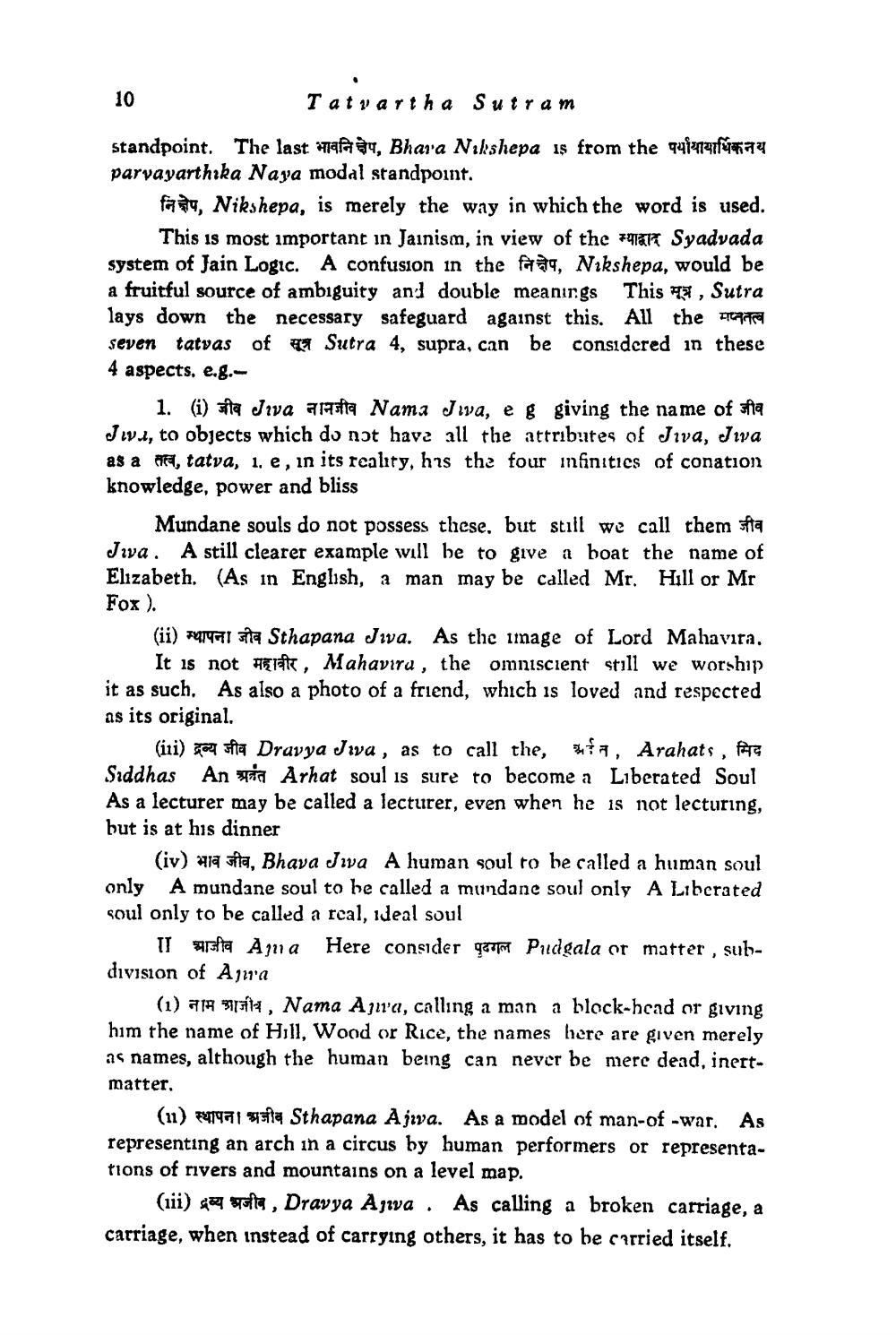________________
10
Tatvartha Sutra m
standpoint. The last af, Bhara Nikshepa is from the qui parvayarthika Naya modal standpoint.
fa, Nikshepa, is merely the way in which the word is used. This is most important in Jainism, in view of the Syadvada system of Jain Logic. A confusion in the faq, Nikshepa, would be a fruitful source of ambiguity and double meanings This, Sutra lays down the necessary safeguard against this. All the seven tatvas of Sutra 4, supra, can be considered in these 4 aspects. e.g.
1. (i) जीव Java नानजीव Nama Jwa, eg giving the name of जीव Jwu, to objects which do not have all the attributes of Jiva, Jwa as a, tatva, 1. e, in its reality, has the four infinities of conation knowledge, power and bliss
Mundane souls do not possess these. but still we call them a Java. A still clearer example will be to give a boat the name of Elizabeth. (As in English, a man may be called Mr. Hill or Mr Fox).
(ii)
Sthapana Jwa. As the image of Lord Mahavira. It is not, Mahavira, the omniscient still we worship it as such. As also a photo of a friend, which is loved and respected as its original.
Dravya Jwa, as to call the,
(ii) fa, Arahats, f Siddhas An Arhat soul is sure to become a Liberated Soul As a lecturer may be called a lecturer, even when he is not lecturing, but is at his dinner
(iv) aaa, Bhava Jwa A human soul to be called a human soul only A mundane soul to be called a mundane soul only A Liberated soul only to be called a real, ideal soul
II आजीव Ajna Here consider q Pudgala or matter, subdivision of Ajra
(1), Nama Ajra, calling a man a block-head or giving him the name of Hill, Wood or Rice, the names here are given merely as names, although the human being can never be mere dead, inert
matter.
(11)
Sthapana Ajwa. As a model of man-of-war. As representing an arch in a circus by human performers or representations of rivers and mountains on a level map.
(ii), Dravya Ajwa. As calling a broken carriage, a carriage, when instead of carrying others, it has to be carried itself.




